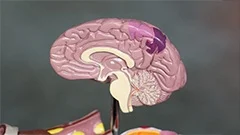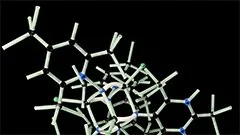Introduction
The study of nutrition is a crucial aspect of biological and physiological sciences, as it encompasses the process by which an organism takes in and utilizes food substances to support its growth, reproduction, maintenance, and repair. This comprehensive guide aims to provide a detailed and structured overview of key concepts related to nutrition within the framework of animal physiology at the undergraduate level.
Overview
Nutrition can be broadly categorized into six macronutrients: carbohydrates, proteins, fats, vitamins, minerals, and water. Each of these components plays a vital role in maintaining an animal's health and well-being. The focus of this course will be on understanding the functions, sources, absorption, transport, storage, metabolism, and regulation of these essential nutrients within various physiological contexts.
Macronutrients
Carbohydrates
Carbohydrates serve as a primary energy source for most organisms. They are found in various forms, including monosaccharides (simple sugars), disaccharides (double sugars), and polysaccharides (complex carbohydrates). Plants store carbohydrates primarily as starch and cellulose, while animals primarily store them as glycogen.
Digestion and Absorption of Carbohydrates
The digestive process breaks down dietary carbohydrates into monosaccharides, which are then absorbed by the intestinal epithelium via active transport mechanisms such as facilitated diffusion and sodium-dependent glucose transporters.
Metabolism of Carbohydrates
Glucose, the primary monosaccharide in animals, is used for energy production through glycolysis, the tricarboxylic acid (TCA) cycle, and oxidative phosphorylation. Excess glucose can be converted to glycogen for storage or converted to fatty acids for adipose tissue storage.
Proteins
Proteins are essential for growth, repair, and maintenance of tissues. They are composed of amino acid subunits, with each protein having a unique sequence of amino acids that determines its three-dimensional structure and function.
Digestion and Absorption of Proteins
Protein digestion begins in the stomach by hydrolysis into polypeptides by gastric enzymes. The small intestine further breaks down these polypeptides into di- and tripeptides through the action of peptidases, which are then absorbed via active transport mechanisms such as secondary active transport and co-transport with H+ ions.
Metabolism of Proteins
Amino acids absorbed from dietary protein sources or derived from protein catabolism within cells can be utilized for biosynthesis of new proteins, energy production through oxidation, or stored as fatty acids in the liver.
Fats
Fats serve multiple functions in animals, including providing a concentrated energy source, insulating body tissues, and serving as structural components of cell membranes. They are composed of glycerol and fatty acid chains.
Digestion and Absorption of Fats
Fat digestion begins with emulsification in the stomach, facilitating the action of pancreatic lipases that hydrolyze triglycerides into monoglycerides and free fatty acids. Bile salts aid in this process by forming micelles, which solubilize fat molecules for absorption by the intestinal epithelium via passive diffusion and facilitated transport mechanisms.
Metabolism of Fats
Fatty acids absorbed from dietary lipids or derived from lipid catabolism within cells can be re-esterified into triglycerides for storage in adipose tissue, oxidized for energy production, or used to synthesize phospholipids and steroids.
Vitamins
Vitamins are organic compounds that play essential roles as coenzymes, precursors, and regulatory agents in various metabolic pathways. They can be classified into fat-soluble (A, D, E, K) and water-soluble (B complex, C) vitamins.
Sources, Absorption, and Transport of Vitamins
Vitamin sources vary between dietary and microbial origins. Fat-soluble vitamins are absorbed through the process of micelle formation and passive diffusion, while water-soluble vitamins are absorbed via active transport mechanisms along their concentration gradients. Absorbed vitamins are transported in the bloodstream bound to specific plasma proteins such as albumin or lipoproteins.
Metabolism of Vitamins
Vitamin metabolism involves activation, conversion, and regulation at various stages to maintain optimal physiological function. Deficiencies or excesses of vitamins can result in a range of adverse health effects.
Minerals
Minerals are inorganic elements that play critical roles in numerous biological processes, including enzyme activation, ion homeostasis, and structural support. Major minerals include calcium, phosphorus, sodium, potassium, chloride, and magnesium, while trace minerals include iron, zinc, copper, iodine, fluoride, manganese, and selenium.
Sources, Absorption, and Transport of Minerals
Mineral sources vary between dietary and soil origins. Mineral absorption involves active transport mechanisms across the intestinal epithelium, with subsequent transport in the bloodstream bound to specific plasma proteins or incorporated into intracellular organelles as needed.
Metabolism of Minerals
Mineral metabolism involves processes such as activation, storage, and excretion. Regulation of mineral levels within the body is critical for maintaining physiological homeostasis and preventing deficiencies or toxicities.
Water
Water plays a crucial role in numerous biological processes, including serving as a solvent, transport medium, and regulator of temperature. It is absorbed by the intestinal epithelium through passive diffusion and osmosis, with subsequent distribution throughout the body via the circulatory system.
Regulation of Water Balance
The regulation of water balance involves several mechanisms aimed at maintaining optimal levels within the body, including thirst, antidiuresis, and renal conservation. Disruptions in these processes can lead to conditions such as dehydration or overhydration.
Conclusion
This comprehensive guide has provided an overview of key concepts related to nutrition within the framework of animal physiology. By understanding the functions, sources, absorption, transport, storage, metabolism, and regulation of macronutrients (carbohydrates, proteins, fats), vitamins, minerals, and water, we can gain insight into how animals utilize food substances to support their growth, reproduction, maintenance, and repair.
MCQ: Test your knowledge!
Do you think you know everything about this course? Don't fall into the traps, train with MCQs! eBiologie has hundreds of questions to help you master this subject.
These courses might interest you
Create a free account to receive courses, MCQs, and advice to succeed in your studies!
eBiologie offers several eBooks containing MCQ series (5 booklets available free for each subscriber).



